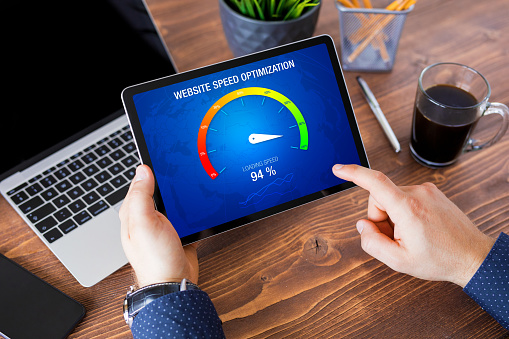
The most important 10 steps to speed up your site, website visitors are used to getting what they want with a click of a button.. and slow your website will lead to lower profits and direct visitors to your competitors sites if they are faster than yours.. but have you ever wondered why websites load slow and how Improve your website speed? There are many reasons why a website is slow and by solving them you will be able to increase the speed of your website. Below we will show you the most important 10 steps to speed up your site.
https://bybnews.com/the-most-important-10-steps-to-speed-up-your-site/
The most important 10 steps to speed up your site
Table of Contents
-
Resize images
If you are a CMS user such as WordPress or others, you can upload images in their full size and then adjust the image display size on the site management page. But this process does not work because some browsers follow the commands and load the images they receive in their normal size and then resize them to the size you chose, and this can slow down your site.
To solve this problem, you must use an image-editing program to adjust the size of the images to the appropriate size before adding them on your website. Despite the simplicity of this step, it is one of the most important reasons for slow sites, and once this problem is fixed, you will notice an increase in your site speed by up to 10%
-
Allow caching
A browser cache is a feature that allows a visitor’s browser to store copies of your site’s pages so that if the visitor comes back to your site, the stored content can be restored instead of reloading the entire page.
This helps to have a faster page load time because the most important content of your site such as logo, images, … will not be reloaded with the site again.
To activate the caching feature in the browser for WordPress users, you can download the W3 Total Cache tool, and you can also integrate the caching in the browser into the server script of your site.
-
Turn on Gzip
Gzip compression is a technology that reduces the size of HTTP responses in the browser, and the compression ratio can sometimes reach 70%. By using the Gzip compression program, you can significantly speed up the loading of your site.
-
Organize CSS and JAVASCRIPT
Keep your site code clean and tidy, by placing CSS files at the top of the page and Javascript snippets at the bottom when working with HTML pages.
Adding CSS files at the top of the page prevents gradual rendering and provides resources to Internet browsers, and placing Javascript at the bottom prevents your pages from waiting for loading until the code is fully executed, and this leads to faster browsing of your site for visitors
-
Take advantage of CDNs
Content Delivery Networks or Content Display Networks (CDNs) is a vast network of servers that store content from all over the world.
Instead of storing your site’s content on the hosting that you booked your site on, you store your site’s content such as images and videos on the content display network, and the result is a faster loading of your site, which brings visitors to your site and a good ranking in search engines.
-
Update your website script
If you have created your site using a content management system (CMS) or e-commerce platform, you must constantly track new updates to add-ons and update it constantly, but do not forget to back up your site when you upgrade it. This simple step increases the speed of your site as well.
-
Remove unnecessary additions
As we all know that there are a large number of add-ons and scripts available for free, which tempts website owners to put in additions they may not need, and these add-ons are a heavy burden on the speed of the site.
Before placing any add-on on your site, ask yourself, is this add-on very necessary? Because it put any addition be at the expense of the speed of your site.
-
Homepage adjustments
The home page is usually the first thing a visitor enters, and its size is large, sometimes exceeding 1 MB.
And you can speed it up by doing several things such as displaying an excerpt from the post and not the entire post, displaying 5 posts in the main instead of 10, removing unimportant widgets or even posting if it does not provide a real function.
-
Add LazyLoad feature
When you enter a site and scroll down the page a little, you see the first picture in full?
This is the LazyLoad feature that only displays the image when the visitor accesses it. That is, instead of downloading 10 images on the page and making the visitor wait 30 seconds, only the first image will be downloaded and this will not take much time, and then whenever he continues reading the rest of the images will be downloaded in turn.
-
Good hosting
Despite all the steps that we explained earlier, the most important thing of all this is that you have a strong hosting that is able to withstand the pressure of visitors and work with high efficiency without stopping. When your site is hosted on crowded servers, there are other sites that receive very large traffic, so know that this will affect your site Also, its speed.
Of course, if your site is large, it is better to stay away from shared hosting. It is true that you will pay a larger amount, but the number of visitors will affect you in profits later.